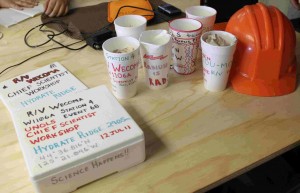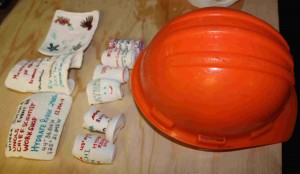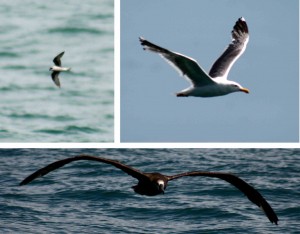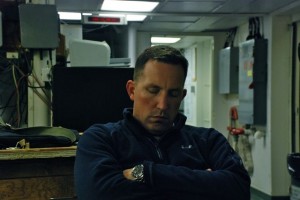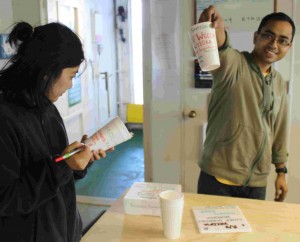After successful efforts by the unstoppable Daryl, our CTD is back online. It’s a good thing, as hydrocasts are the backbone of our sampling efforts. We’re dropping a 12-Niskin-bottle rosette to the seafloor, collecting various ancillary data (temperature, salinity, dissolved oxygen, chlorophyll fluorescence, transmissivity, and photosynthetically-active radiation) on the way down, and filling the bottles with water samples on the way back to the surface.
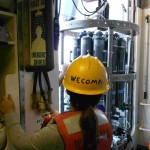
Deploying the rosette. Lindsey Koren sends the rosette out of the CTD bay and on its way to collect samples.
(Photo: C. Reimers)
 Everyone crowds around the monitors to watch data coming from sensors on the CTD. Water sample collection depths are determined by depth profiles of parameters such as dissolved oxygen and chlorophyll.
Everyone crowds around the monitors to watch data coming from sensors on the CTD. Water sample collection depths are determined by depth profiles of parameters such as dissolved oxygen and chlorophyll.
Clockwise from left: Alyson Santoro, Kim Null, marine tech Meghan, Pat Wheeler, Lindsey Koren, marine tech Daryl, and Amy Townsend-Small. (Photo: C. Reimers)

Retrieving the CTD. The rosette is being brought back on deck, full of water samples, by Penny Vlahos and marine tech Meghan. (Photo: C. Hintz)
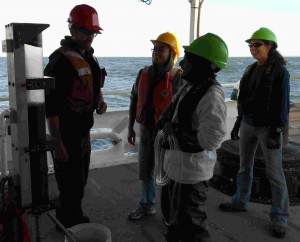
Successful sediment cores (on the hydraulic extruder at left) make everyone happy. From left: marine tech Daryl, Chandranath Basak, marine tech Meghan, and Russell Carvahlo. (Photo: C. Reimers)
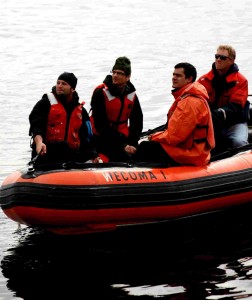
We send the zodiac out occasionally to collect sea surface microlayer samples (using glass plates) and uncontaminated trace metal samples. The wake from Wecoma destroys the microlayer, and of course, it’s easy to get metal contamination if you sample near the metal ship. From left: Aaron Beck, Dan Thornton, co-chief scientist Joaquin Martinez-Martinez, and mate Jeff C.
(Photo: C. Hintz)
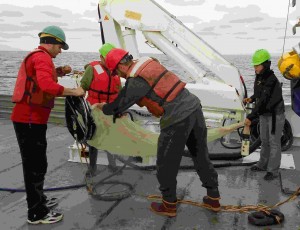 Foraminifera (calcareous protists) are collected by towing a plankton net. Here, collected plankton are being rinsed into the collection vessel held by Yuehan. From left: Aaron Beck, Chandranath Basak, marine tech Daryl, and Yuehan Lu.
Foraminifera (calcareous protists) are collected by towing a plankton net. Here, collected plankton are being rinsed into the collection vessel held by Yuehan. From left: Aaron Beck, Chandranath Basak, marine tech Daryl, and Yuehan Lu.
(Photo: C. Reimers)
That’s it in a nutshell! We’ll be adding more photos to a gallery soon, and writing more thrilling updates about life and science on R/V Wecoma.

